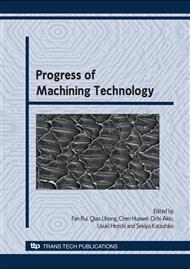p.577
p.582
p.589
p.594
p.599
p.604
p.608
p.612
p.619
Finite Element Analysis on Segmented Chip Formation for High Speed Cutting of Ti6Al4V Alloy
Abstract:
To accurately simulate the segmented chip formation of titanium alloy Ti6Al4V in high speed cutting process, the key techniques of the finite element modeling were investigated detailed, which included establishing the finite element model, material constitutive relation, chip separation criteria, material failure criteria. A high speed cutting case of titanium alloy Ti6Al4V were simulated with thermal mechanical analysis and adiabatic analysis respectively. Through the comparison of the two simulated results, it proved the segmented chip is formed because of the adiabatic shear. The results prove the finite element model established is correct.
Info:
Periodical:
Pages:
599-603
Citation:
Online since:
February 2009
Authors:
Price:
Сopyright:
© 2009 Trans Tech Publications Ltd. All Rights Reserved
Share:
Citation:


